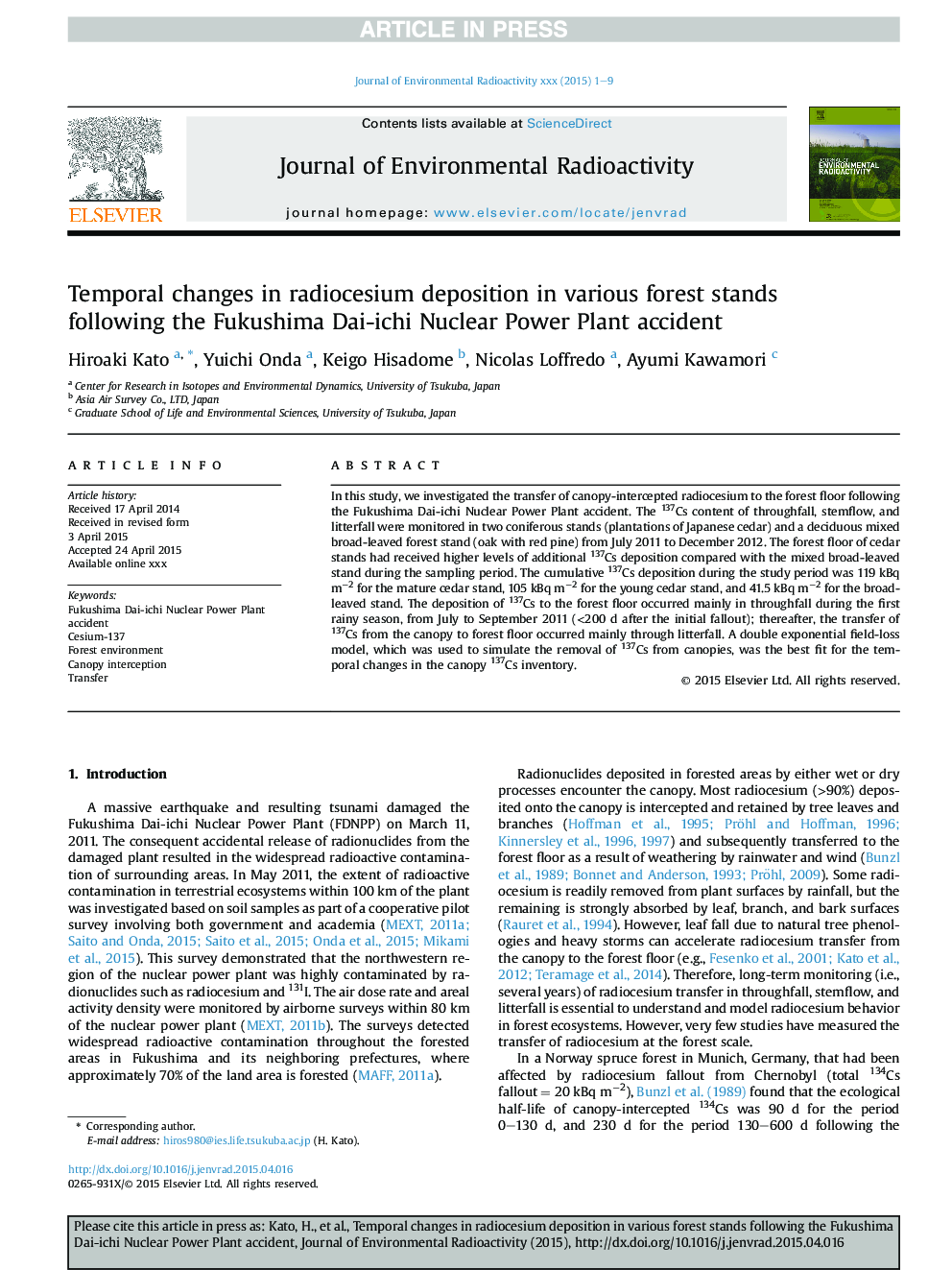| Article ID | Journal | Published Year | Pages | File Type |
|---|---|---|---|---|
| 5477742 | Journal of Environmental Radioactivity | 2017 | 9 Pages |
Abstract
In this study, we investigated the transfer of canopy-intercepted radiocesium to the forest floor following the Fukushima Dai-ichi Nuclear Power Plant accident. The 137Cs content of throughfall, stemflow, and litterfall were monitored in two coniferous stands (plantations of Japanese cedar) and a deciduous mixed broad-leaved forest stand (oak with red pine) from July 2011 to December 2012. The forest floor of cedar stands had received higher levels of additional 137Cs deposition compared with the mixed broad-leaved stand during the sampling period. The cumulative 137Cs deposition during the study period was 119Â kBq mâ2 for the mature cedar stand, 105Â kBq mâ2 for the young cedar stand, and 41.5Â kBq mâ2 for the broad-leaved stand. The deposition of 137Cs to the forest floor occurred mainly in throughfall during the first rainy season, from July to September 2011 (<200Â d after the initial fallout); thereafter, the transfer of 137Cs from the canopy to forest floor occurred mainly through litterfall. A double exponential field-loss model, which was used to simulate the removal of 137Cs from canopies, was the best fit for the temporal changes in the canopy 137Cs inventory.
Keywords
Related Topics
Physical Sciences and Engineering
Energy
Nuclear Energy and Engineering
Authors
Hiroaki Kato, Yuichi Onda, Keigo Hisadome, Nicolas Loffredo, Ayumi Kawamori,
